Landmark arch signals expansion of railway line.
This article contains affiliate links. We may earn a small commission on items purchased through this article, but that does not affect our editorial judgement.
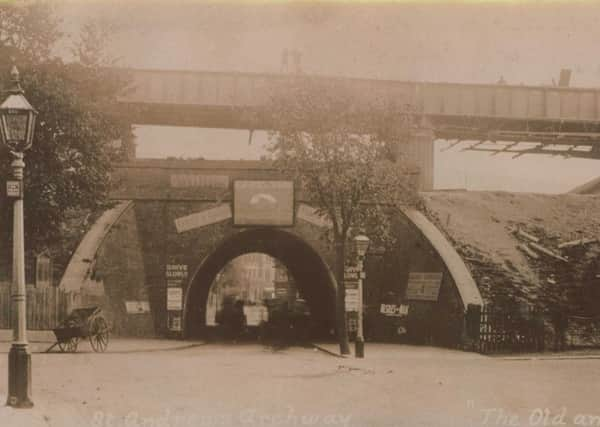

He writes: As Queens Road was gradually extending northward from the 1830’s onward, the railways too were contributing to the townscape with a public meeting at the end of 1838 deciding that Hastings should be joined to London by railway.
Early the following year the necessary Acts of Parliament had been applied for and, by mid 1846, the London, Brighton and South Coast Railway, from Brighton through Lewes had arrived at a temporary station at Bulverhythe before reaching a new station, West Marina, at Bopeep by the end of that year.
Advertisement
Hide AdAdvertisement
Hide AdThe following year The South Eastern Railways, a rival company to the LBSCR, started building the line from Bopeep through Rye to Ashford, starting with the Bopeep to Warrior Square tunnel in August 1847 and work on the two tunnels, (using 16 million bricks) from Bopeep -Warrior Square and Warrior Square - Hastings was completed by the end of 1850.
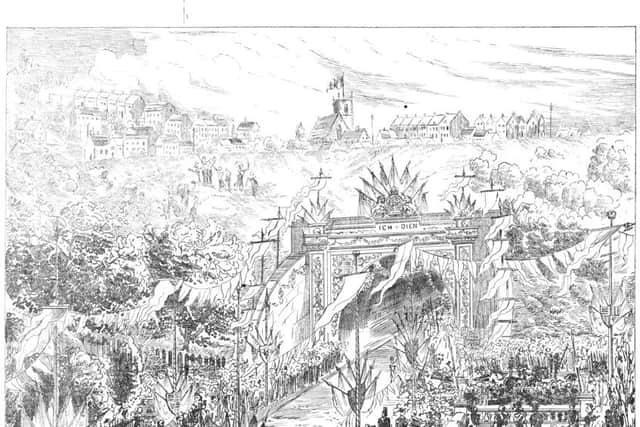

The spoil from the tunnels was used to fill the marshes near their portals creating land now known as Havelock Road, Cambridge Road and Grosvenor Gardens and to build the huge embankment to the east which radically altered the appearance of the town by cutting the Priory valley in half and framing the top of Queens Road.
Because the marshy nature of the ground the construction this embankment was difficult and required piling that often sank down during the night by as much as it had been raised during the day. However, borings showed a solid foundation of beach and stone at depths of 35 to 40 feet. Tunnels were dug under Mount Pleasant Road to the Ore valley and then under the Ridge and the Bopeep - Ashford line officially opened on 13 February 1851 with the Tunbridge Wells - Bopeep railway line opening a year later.
The St. Andrew’s Arch that pierced the middle of this easterly embankment was originally a low brick-built tunnel and people on horse-drawn carriages had to duck their heads to pass through it. The bricks for this arch were made from clay taken from the brick-fields on the site of the present Alexandra Park and the ponds in the Park were originally pits from which the clay had been extracted. Excavations also produced bones of the prehistoric reptile Iguanodon, a quantity of ironstone and even traces of coal.
Advertisement
Hide AdAdvertisement
Hide AdThe mid 1860’s saw large sections of the north end of the Priory Valley between Stonefield Place and the railway bridge being sold for development followed by the sale of 149 acres of the St Helens Estate where, until then, there had only been a few houses and farms in the area between the Hastings-Ore railway line. Blacklands and the Ridge and the sale of the St Helens Estate helped open up the whole area and fuel the development that was just starting and the dark, low railway arch at the end of Queens Road was starting to be considered a barrier to development.
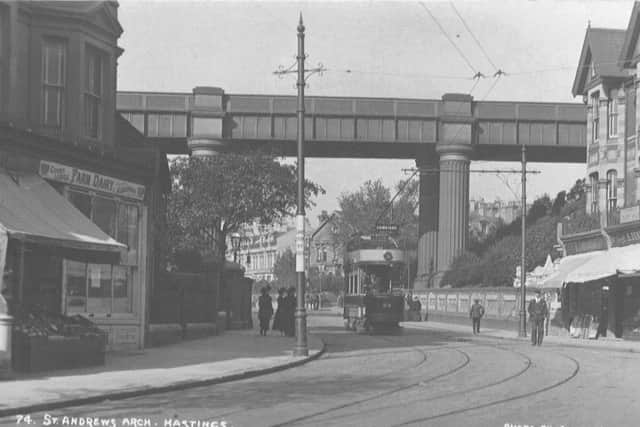

In 1881 the chairman of the South Eastern Railway Company and other senior officials toured the borough resulting in the building of stations at Ore and West St Leonards.
They also looked at the St Andrews archway and admitted that it “certainly required remodelling”, but did not consider it a priority. A year later Alexandra Park was opened by the Prince and Princess of Wales (later King Edward VII and Queen Alexandra) and the Royal party had to pass though the arch and its future was again discussed.
By 1889 the South Eastern Railway had offered to erect a light iron bridge provided the Council paid six-sevenths of the £6,000 cost. In 1890 Hastings Council turned down the offer despite a petition with 986 signatures. It was noted that the tunnel-like Archway (described by some as a ‘hideous hole’) was only 21 feet wide but was very heavily used, being the only route from the town centre to Blacklands and much of the north of the borough. Objectors said the well-off residents of that area should make a significant contribution to a scheme which would increase the value of their property and finally, in November 1898, the tunnel under the railway line at the top of Queens Road was demolished and replaced by today’s impressive structure.
Advertisement
Hide AdAdvertisement
Hide AdThe Hastings and St Leonards Observer published a special supplement in June 1882 (which eventually ran to three editions) to commemorate the visit to the town of the Prince and Princess of Wales and their reporter noted:
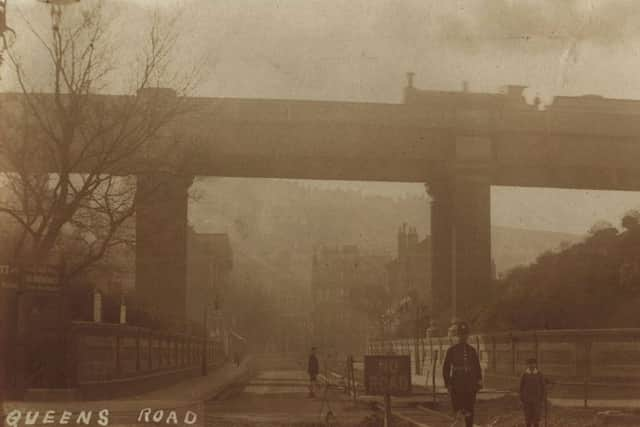

“For the time this dreadful eyesore was converted into a thing of beauty and a sight worth seeing. In the first place, the Corporation, or rather, perhaps, the Committee of Arrangements, had the walls carefully colour-washed, the sides being white, and what may be termed the roof a French grey.
“These two tints were divided by a broad band of good brown which was made use of to conceal the fastenings requisite for the support of some very elaborate festoons of roses, Interspersed with foliage consisting of leaves In all shades of green peculiar to trees and shrubs at this time of the year These wreaths gave an almost gay appearance to the dull forbidding aspect of the gloomy roadway.
“But, to give a few more details, both ends of the arch were faced with crimson cloth as a groundwork, on which the white and gilt designs and scroll devices showing up capitally. At the summit of the outer brickwork and standing out in bold relief was a splendid trophy, the Royal Arms emblazoned on a shield with a background of flags, including both British and foreign. The groundwork of the whole was built to represent a cross-beam resting on two columns, and thus a squared archway would be formed, the curved appearance being apparently given by draped curtains carried back to the columns again.
Advertisement
Hide AdAdvertisement
Hide Ad“These side pillars were made to look as if of ornamental iron, and at the base on gilt letters, on a blue panel, was the monogram A.A. At each end of the cross-beam was a. smaller trophy than the one in the centre but of somewhat similar design, only that the place of the Royal Arms was occupied by likenesses of the Prince and Princess surrounded by the words “Albert” and “Alexandra” .
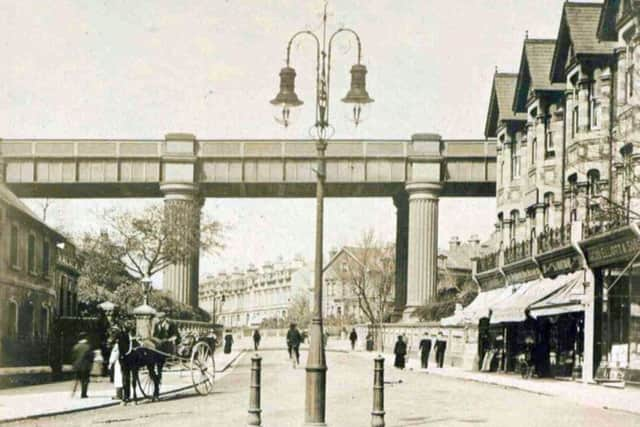

“Immediately below the huge trophy were the words “Ich Dien,” and under this again was the three ostrich feathers which go in company with that motto. On either side of the last-named appeared the Royal coat of arms and the well-known lions of the Cinque Ports.
“From the apex of the archway, hung wreaths of roses, which were carried to the sides, and, being crossed by a third festoon and set off with foliage.”
Apparently these improvements to tunnel interior were retained and it was repainted regularly until it was demolished.
Advertisement
Hide AdAdvertisement
Hide AdAll illustrations throughout this series are from Ion Castro’s own collection and he can make available copies of many of the historic images used in this series - contact him - [email protected] or tel 01424 437468 and there’s more local history on Ion’s website, www.historichastings.co.uk
Captions:
74. St Andrews Arch, Judges’.
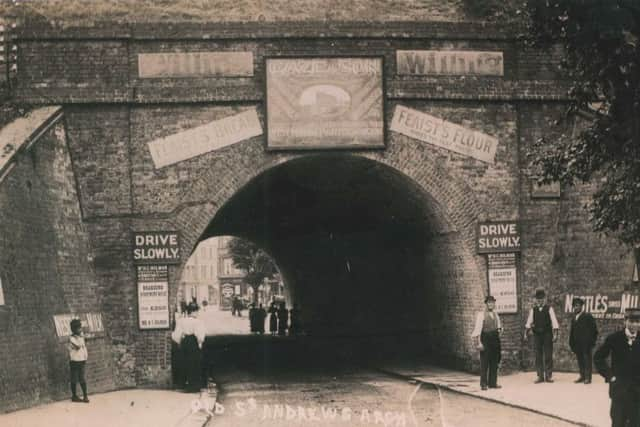

A superb image from Judges dating from around 1910. The tram bears the destination ‘Cemetery’ and the tram track can be seen changing from single to double track in the foreground. The tram stop is painted on the traction pole ‘cars stop by request’. Court Lodge Farm Dairy can be seen on the left and on the right is the large block forming 130 a,b,c and d Queens Road.
Heasman.
A tram heads into town with another not far behind it. Notice the ornamental fountain next to the newsagents.
Lamp.
Before the trams came, this view pre-1904 shows the Gas Testing Station on the left and 130a-d Queens Road on the right and the magnificent streetlamp in the centre.
Laying Tram Track.
Advertisement
Hide AdAdvertisement
Hide AdThe tramways came to Hastings at the beginning of the last century, track laying started in 1904 and the trams followed in 1905. The tramtrack was double under the bridge and this image shows one track already laid with a policeman guarding the roadworks and a train on the bridge.
Special Edition.
A flamboyant illustration looking south from the special edition of the Observer.
St Andrews Arch.
St Andrews Arch in its heyday, with advertisements for local businesses. The off licence at the end of Stonefield Road can be seen through the arch.
St Andrews Arch 1,2,3 & 4.
The new iron viaduct was built above the old arch which was then demolished underneath it. The railway trackbed was raised by several feet at the same time. The lamp post at the bottom of Elphinstone Road bears a notice exhorting “Keep to Your Right”.
Advertisement
Hide AdAdvertisement
Hide AdDon’t miss out on all the latest breaking news where you live.
Here are four ways you can be sure you’ll be amongst the first to know what’s going on.
1 Make our website your homepage at www.hastingsobserver.co.uk
2 Like our Facebook page at www.facebook.com/hastingsobserver
3 Follow us on Twitter @HastingsObs
Advertisement
Hide AdAdvertisement
Hide Ad4 Register with us by clicking on ‘sign in’ (top right corner). You can then receive our daily newsletter AND add your point of view to stories that you read here.
And do share with your family and friends - so they don’t miss out!
The Hastings Observer - always the first with your local news.
Be part of it.